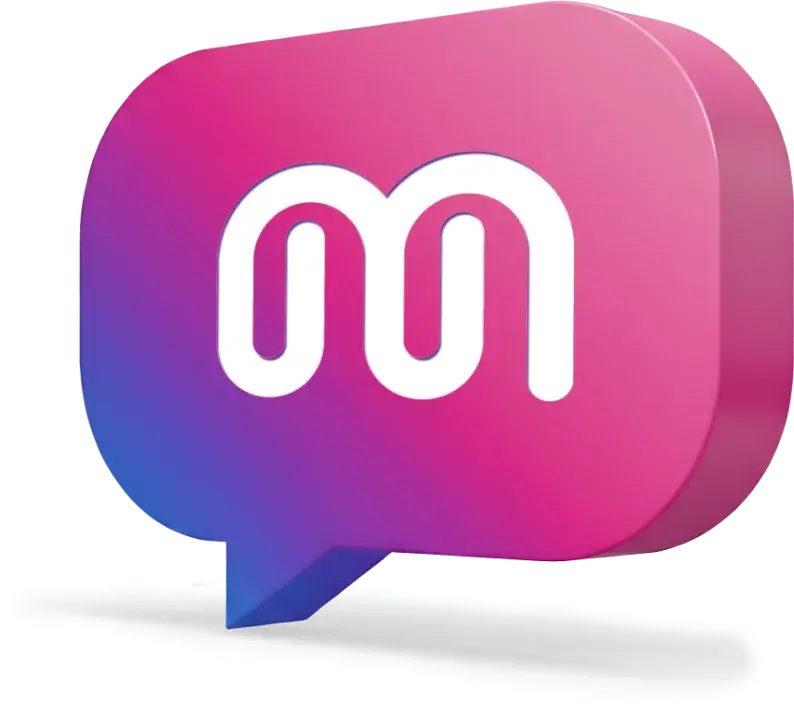SECTION
Creating a Performance Management Plan: Steps and Examples

Listen to this article:
Companies still relying on annual performance reviews are missing out on what drives growth in today’s modern workplace. If you’re struggling with your performance management plan, or feeling like your process is stuck in the past, leaving your team disengaged, you are not alone.
Studies have shown that 95% of managers are not satisfied with their organization’s annual performance management process, and 75% of employees see yearly reviews as unfair. Another study has found that only 8% of companies believe that their traditional performance management process drives business value.
If those numbers felt too close to home, it’s time to rethink your approach before it’s too late. Luckily, with the right performance management plan that is tailored to today’s workplace needs, your team can thrive.
In this guide, we'll walk you through the necessary steps to building a modern and continuous performance management plan that your team will love. Let’s get started!
What is a performance management plan?
A performance management plan is a strategic framework designed to enhance and align employee performance with organizational goals. A performance management plan ensures that every team member contributes effectively to the business's success by clearly documenting goals, competencies, and skills.
Effective performance management involves setting transparent goals and fostering continuous growth and engagement within the team. Companies with strong agile performance management plans report higher employee satisfaction and productivity. These plans help clarify roles, expectations, and career paths, reducing turnover and boosting morale.
Steps to create a performance management plan
Everybody knows that having a plan does half the work. Effective performance management doesn't just happen by chance—it requires thoughtful planning and execution. To help you create a performance management plan that drives results and keeps your team happy and engaged, follow these steps:
1. Establish clear, measurable goals
Every successful and sustainable plan starts with setting clear, actionable goals, and performance management is no exception. How can your people know where to focus their efforts without well-defined goals? Think of goals as a roadmap—when team members know where they're headed and what’s expected of them, they’re more likely to stay engaged and motivated.
Collaboration is key in this process. Involving your people in the goal-setting conversation creates a sense of ownership and personal investment in the outcome. It also helps align their personal aspirations with the company's broader goals, creating a win-win scenario. Aim to balance achievable goals that provide quick wins and stretch goals that challenge team members to grow without setting them up for failure.
➡️ Continue reading: The Crucial Role of Goal Alignment in Performance Management
2. Conduct regular performance reviews
Traditional performance management processes center around annual performance reviews, which are not only dreaded by employees but also unfair and shallow. Unlike outdated performance frameworks, modern performance management plans focus on regular check-ins that happen all year round.
Depending on your company's needs, you can conduct performance reviews every three, six, or nine months. From my experience, the more often you do it, the better. Regular conversations with your mentees help tremendously in tracking performance, addressing issues on time, and making improvements.
3. Provide continuous feedback
Regular performance reviews are the formal conversations you have with your people as part of the performance management plan, but they should also be supplemented with continuous feedback.
Many managers make the mistake of only offering feedback during performance reviews. However, in a people-centric company culture that values growth and sustains performance, feedback is given constantly, openly, and constructively.
Remember that for a culture of continuous feedback to actually work, feedback must be given and received both ways—meaning that managers should also ask for feedback from their mentees.
4. Build improvement plans and provide development opportunities
A modern, continuous performance management framework has the advantage of spotting performance issues early on and using the appropriate tools to address them. Great managers don’t view performance as “good” or “poorly” but rather as an opportunity for growth and development.
Additionally, the manager's job is to create a safe environment where people are not punished for making mistakes. Building this kind of frame shows that you lead with kindness and compassion and are dedicated to your team's personal and professional development.
So, if you notice that one of your mentees is struggling and not meeting expectations, first try to discover the root cause of the problem. It could be stress, workload, unrealistic work expectations, or personal matters. Then, develop a personalized plan to help the individual overcome the situation.
For example, you could offer more training sessions or a position in a different department that better fits the person’s skills.
5. Implement a recognition and awards system
An effective performance management plan also helps identify top performers and reward them accordingly. Incentives and recognition are essential for motivating people and creating a happy workplace.
Plus, people will be more likely to commit to their work and drive excellence when they feel valued and appreciated. You can implement several types of recognition programs; some are more extensive than others and require thoughtful planning or an extensive budget. However, every small gesture, such as a thank you note or a group message for someone’s great work, can really make a difference.
➡️ Continue reading: HR Leaders Share How to Design an Employee Recognition Program
Recognition is such a big part of Mirro’s culture that we even transformed it into a feature within our product. This feature goes a long way toward improving employee morale, especially when it's simple to miss excellent work or when things get so busy that we forget to provide praise. With Mirro’s recognition system, you can give Kudos to anyone on the team in just a few clicks.
6. Track progress and evaluate performance
Finally, you should track and evaluate progress to determine whether your performance management plan is effective. You can do so manually by keeping track of your efforts in internal documents or through performance management software, which is far more effective. In addition, building transparent, well-documented evaluation practices helps organizations stay aligned with emerging EU requirements such as the pay transparency directive.
➡️ Continue reading: How to Introduce a Performance Management System in an Organization
Having all-in-one performance management software like Mirro automates operations like scheduling, feedback collection, and report generation, which speeds up the review process and saves time. It gives performance data a consolidated platform, makes data retrieval and analysis easier, and provides templates and tools to help with regular and effective performance reviews.

Streamline performance management with Mirro
Performance plans examples in practice
Having the steps of a performance management plan outlined is essential, but to start on that, you should first see its applicability. To help you better understand the benefits of performance management, here are some real-world examples of how these plans work in different contexts:
eMag transformed and scaled performance management
After extensive research into performance management methodologies and best practices, eMAG developed its own framework called S.T.E.P.S., which stands for “Set Objectives | Track Progress | Evaluate Performance | Provide Feedback | Support Development.” This framework ensures clarity by setting clear objectives, monitoring progress, and making quick adjustments through regular 1-to-1 meetings and ongoing feedback.
This framework also supports alignment with company principles and transparent performance evaluations every six months. To implement this framework effectively, eMAG chose Mirro as their performance management software, thanks to its robust features, intuitive UX, and dedicated support team.

Netflix’s freedom and responsibility culture
Netflix’s performance management plan is embedded in its unique culture of freedom and responsibility. Employees are entrusted with a high degree of autonomy, and in return, they are expected to perform at a high level. Performance management at Netflix is less about formal reviews and more about open, candid conversations. People are encouraged to give each other feedback regularly, fostering a culture of trust and accountability.
SeedBlink improved performance management with software adoption
SeedBlink places a high priority on transparent, continuous feedback and recognition, and they needed a performance management system to support that. Mirro delivered on all fronts, providing a seamless transition with a performance management plan that aligned closely with SeedBlink's existing framework. The HR team particularly values Mirro's flexibility in setting the frequency of performance check-ins, and the platform has driven strong engagement, achieving a 73% completion rate for feedback requests within just two weeks.

Deloitte reinvented performance management
Deloitte revamped its performance management to focus on simplicity and meaningful conversations. The process involves regular check-ins where managers ask four key questions to gauge people’s performance and future potential. This approach not only simplifies the process but also makes it more relevant and personalized, helping to align individual performance with team goals.
How to measure the success of a performance management plan
Finally, you must evaluate the success of your performance management plan after crafting it. Your people need to know where they stand in improving or maintaining their performance, and your HR team needs to determine whether the current plan works.
To determine the effectiveness of your performance management plan, use a combination of metrics and employee feedback:
- Performance metrics: track key metrics such as sales figures, project completion rates, and customer satisfaction scores to gauge employee performance.
- Employee feedback: regularly gather feedback from your people to assess their satisfaction with the performance management plan. This could be done through anonymous employee surveys or one-on-one conversations.
- Adjusting the plan: based on the data collected, adjust the performance management plan to better meet the needs of both the organization and its employees. For instance, if a particular goal is consistently unmet, consider revising the target or providing additional training.
- Continuous improvement: successful performance management plans are not static. They evolve based on performance data, feedback, and changes in organizational goals. Regular reviews and updates to the performance management plans are crucial.
Craft a performance management plan before it’s too late
Although crafting a performance management plan takes time, the benefits are well worth the effort. Once implemented, a performance management plan can be a powerful tool for aligning team performance with organizational goals. The key is to maintain flexibility, regularly measure success, and be willing to make adjustments as needed. Hopefully, the steps and the performance management examples from this article will give you everything you need to know to start acting on it.
Frequently Asked Questions
-
What is a performance management plan?
-
How do I create a performance management plan?
-
What are the key components of a performance management plan?
-
What are common challenges in implementing a performance management plan?
A strategic process to enhance employee performance and achieve business goals through goal setting, feedback, and evaluation.
Start by setting clear goals, communicating them effectively, providing regular feedback, and tracking progress. These proven performance management strategies can take your plan even further.
Knowing the essential elements—such as goal-setting, monitoring, feedback, and evaluation—is crucial for developing a comprehensive and functional plan.
Challenges include resistance to change, communication barriers, and inconsistent feedback.






